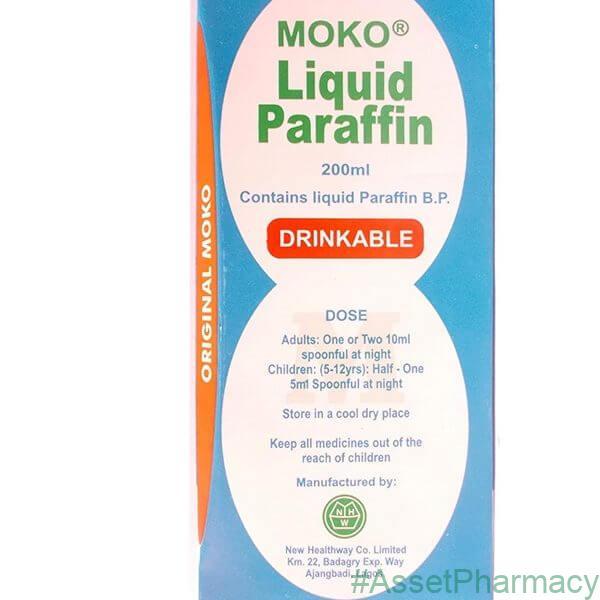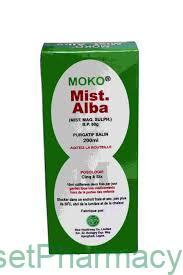Getzome Insta 20mg Powder – Omeprazole 20mg powder, 10 Sachets
- Effective Treatment for heartburn, Reflux and Stomach Ulcer
- Short Term Treatment Use Only
- Active Ingredients: Omeprazole + Sodium bicarbonate
- Suitable for Adults and Children over 18 Years
- Not suitable in pregnancy or breastfeeding
Original price was: ₦5,500.00.₦3,350.00Current price is: ₦3,350.00.
- Description
- Additional information
- Brand
- How to Use
- Product Details
- Side Effects
- Ingredients
- Delivery
Getzome Insta 20mg Powder – Omeprazole 20mg powder, 10 Sachets
What is Getzome Insta 20mg Powder?
Getzome Insta 20mg Powder (Omeprazole + Sodium bicarbonate) is a combination of omeprazole, a proton-pump inhibitor, and sodium bicarbonate, an antacid. Getzome insta contains immediate-release formulation of omeprazole and sodium bicarbonate. Sodium bicarbonate raises the gastric pH and thus protects omeprazole from acid degradation.
Getzome 20 is a combination medicine used to treat heartburn and other symptoms of gastroesophageal reflux disease (GERD).
1. In the treatment of Gastro-Esophageal Reflux Disease (GERD):
– For the treatment of heartburn and other symptoms associated with GERD.
– For the treatment of erosive esophagitis which has been diagnosed by endoscopy.
2. In short-term treatment of active duodenal ulcer. Some patients may require additional therapy.
3. In short-term treatment of active benign gastric ulcer.
4. For maintenance treatment of healing of erosive esophagitis.
5. For reduction treatment of risk of upper gastrointestinal bleeding in critically ill patients
What is heartburn and Acid Reflux?
Heartburn is a burning feeling in the chest caused by stomach acid travelling up towards the throat (acid reflux). If it keeps happening, it’s called gastro-oesophageal reflux disease (GORD).
The main symptoms of acid reflux are:
- heartburn – a burning sensation in the middle of your chest
- an unpleasant sour taste in your mouth, caused by stomach acid
You may also have:
- a cough or hiccups that keep coming back
- a hoarse voice
- bad breath
- bloating and feeling sick
Your symptoms will probably be worse after eating, when lying down and when bending over.
Lots of people get heartburn from time to time. There’s often no obvious reason why.
Sometimes it’s caused or made worse by:
- certain food and drink – such as coffee, tomatoes, alcohol, chocolate and fatty or spicy foods
- being overweight
- smoking
- pregnancy
- stress and anxiety
- some medicines, such as anti-inflammatory painkillers (like ibuprofen)
- a hiatus hernia – when part of your stomach moves up into your chest
Simple lifestyle changes can help stop or reduce heartburn.
DO
eat smaller, more frequent meals
raise 1 end of your bed 10 to 20cm by putting something under your bed or mattress – your chest and head should be above the level of your waist, so stomach acid does not travel up towards your throat
try to lose weight if you’re overweight
try to find ways to relax
DON’T
do not have food or drink that triggers your symptoms
do not eat within 3 or 4 hours before bed
do not wear clothes that are tight around your waist
do not smoke
do not drink too much alcohol
do not stop taking any prescribed medicine without speaking to a doctor first
What is a Stomach Ulcer?
Signs and symptoms
The most common symptom of a stomach ulcer is burning or gnawing pain in the centre of the tummy (abdomen).
But stomach ulcers aren’t always painful and some people may experience other symptoms, such as indigestion, heartburn and feeling sick.
Getzome Insta 20mg Powder Reviews
After using Getzome Insta 20mg Powder, it’s helpful to let others know about your experience. Reviews of an item help other users know that medicines received have helped the condition it is claimed for, how well the treatment worked or any issues to be aware of. We invite our users to leave a review of both their treatment and of the service provided. Click on the reviews tab to see if there has been feedback on this item.
Price of Getzome Insta 20mg Powder in Nigeria
Getzome Insta 20mg Powder is available on Asset Pharmacy Lagos Nigeria, Nigeria’s Largest Online Pharmacy.
Brand
Getzome
How to Use
How to use
GETZOME INSTA (Omeprazole + Sodium bicarbonate) powder for oral
suspension as per recommended dosing given in below table.
GETZOME INSTA (Omeprazole + Sodium bicarbonate) should be taken on an empty stomach at least one hour before a meal.
Since both 20mg and 40mg oral suspension sachets contain the same amount
of sodium bicarbonate (1680mg), two sachets of GETZOME INSTA
(Omeprazole + Sodium bicarbonate) 20mg are not equivalent to one sachet
of GETZOME INSTA (Omeprazole + Sodium bicarbonate) 40mg; therefore
two 20mg sachets of GETZOME INSTA (Omeprazole + Sodium bicarbonate)
should not be substituted for one sachet GETZOME INSTA (Omeprazole +
Sodium bicarbonate) 40mg.
DIRECTIONS FOR USE:
Empty the sachet contents into a small cup containing 1-2 tablespoons (15
– 30mL) of water. Stir well and drink immediately. Refill cup with water and
drink. DO NOT USE OTHER LIQUIDS OR FOODS.
Product Details
CONTRAINDICATIONS
– Omeprazole is contraindicated in patients with known hypersensitivity to
any component of the formulation.
– Sodium bicarbonate is contraindicated in patients with metabolic alkalosis
and hypocalcemia.
PRECAUTIONS
General:
– Symptomatic response to therapy with omeprazole does not preclude the
presence of gastric malignancy.
– Atrophic gastritis has been noted occasionally in gastric corpus biopsies
from patients treated long-term with omeprazole.
– Omeprazole powder for oral suspension contains sodium in the form of
sodium bicarbonate. This should be taken into consideration for patients
on a sodium-restricted diet.
– Sodium bicarbonate should be used with caution in patients with Bartter’s
syndrome, hypokalemia, respiratory alkalosis, and problems with acidbase balance. Long- term administration of bicarbonate with calcium or
milk can cause milk-alkali syndrome.
Pregnancy:
There are no adequate and well controlled studies on the use of omeprazole
in pregnant women. Omeprazole should be used during pregnancy only if
the potential benefit to pregnant women justifies the potential risk to the fetus.
Nursing Mothers:
Omeprazole is excreted in human milk. Because of the potential for serious
adverse reactions in nursing infants from omeprazole; a decision should be
made whether, to discontinue nursing or to discontinue the drug, taking into
account the importance of the drug to the mother. In addition, sodium
bicarbonate should be used with caution in nursing mothers.
Drug Interactions
– Omeprazole can prolong the elimination of diazepam, warfarin and
phenytoin, drugs that are metabolized by oxidation in the liver. There
have been reports of increased INR and prothrombin time in patients
receiving proton pump inhibitors, including omeprazole, and warfarin
concomitantly. Increases in INR and prothrombin time may lead to abnormal
bleeding and even death. Patients treated with proton pump inhibitors
and warfarin may need to be monitored for increases in INR and
prothrombin time. Although in normal subjects no interaction with
theophylline or propranolol was found, there have been clinical reports
of interaction with other drugs metabolized via the cytochrome P-450
system (e.g., cyclosporine, disulfiram, benzodiazepines). Patients should
be monitored to determine if it is necessary to adjust the dosage of these
drugs when taken concomitantly with omeprazole.
– Because of its profound and long-lasting inhibition of gastric acid secretion,
it is theoretically possible that omeprazole may interfere with absorption
of drugs where gastric pH is an important determinant of their bioavailability
(e.g., ketoconazole, ampicillin esters, and iron salts).
– Concomitant administration of omeprazole and atazanavir has been
reported to reduce the plasma levels of atazanavir.
– Concomitant administration of omeprazole and tacrolimus may increase
the serum levels of tacrolimus.
– Co-administration of omeprazole and clarithromycin have resulted in
increases of plasma levels of omeprazole, clarithromycin, and 14-hydroxyclarithromycin.
OVERDOSAGE
In doses ranged up to 2400mg, manifestations were variable, but included
confusion, drowsiness, blurred vision, tachycardia, nausea, vomiting,
diaphoresis, flushing, headache, dry mouth, and other adverse reactions
similar to those seen in normal clinical experience. No specific antidote for
omeprazole overdosage is known. Omeprazole is extensively protein bound
and is, therefore, not readily dialyzable. In the event of overdosage, treatment
should be symptomatic and supportive. In addition, a sodium bicarbonate
overdose may cause hypocalcemia, hypokalemia, hypernatremia, and seizures.
STORAGE
Store below 30°C.
The expiration date refers to the product correctly stored at the required
conditions.
Side Effects
Side Effects Getzome Insta 20mg Powder
The following adverse reactions were reported:
Body As a Whole
Allergic reactions, including, rarely anaphylaxis, fever, pain, fatigue, malaise
and abdominal swelling.
Cardiovascular
Chest pain or angina, tachycardia, bradycardia, palpitation, elevated blood
pressure, and peripheral edema.
Gastrointestinal
Pancreatitis (sometimes fatal), anorexia, irritable colon, flatulence, fecal
discoloration, esophageal candidiasis, mucosal atrophy of the tongue, dry
mouth, stomatitis. During treatment with omeprazole, gastric fundic gland
polyps have been noted rarely. These polyps are benign and appear to be
reversible when treatment is discontinued.
Hepatic
Mild and, rarely, marked elevations of liver function tests [ALT (SGPT), AST
(SGOT), -glutamyl transpeptidase, alkaline phosphatase, and bilirubin
(jaundice)]. In rare instances, overt liver disease has occurred, including
hepatocellular, cholestatic, or mixed hepatitis, liver necrosis (sometimes fatal),
hepatic failure (sometimes fatal), and hepatic encephalopathy.
Metabolic/Nutritional
Hyponatremia, hypoglycemia, and weight gain.
Musculoskeletal
Muscle cramps, myalgia, muscle weakness, joint pain, and leg pain.
Nervous System/Psychiatric
Psychic disturbances including depression, agitation, aggression, hallucinations,
confusion, insomnia, nervousness, tremors, apathy, somnolence, anxiety,
dream abnormalities, vertigo, paresthesia and hemifacial dysesthesia.
Respiratory
Epistaxis, pharyngeal pain.
Skin
Rash and rarely, cases of severe generalized skin reactions including toxic
epidermal necrolysis (TEN; sometimes fatal), Stevens-Johnson syndrome,
and erythema multiforme (some severe); purpura and/or petechiae (sometimes
with rechallenge); skin inflammation, urticaria, angioedema, pruritus,
photosensitivity, alopecia, dry skin, and hyperhydrosis.
Special Senses
Tinnitus, taste perversion.
Ocular
Blurred vision, ocular irritation, dry eye syndrome, optic atrophy, anterior
ischemic optic neuropathy, optic neuritis and double vision.
Urogenital
Interstitial nephritis (sometimes with positive rechallenge), urinary tract
infection, microscopic pyuria, urinary frequency, elevated serum creatinine,
proteinuria, hematuria, glycosuria, testicular pain, and gynecomastia.
Hematologic
Rare instances of pancytopenia, agranulocytosis (sometimes fatal),
thrombocytopenia, neutropenia, leukopenia, anemia, leucocytosis, and
hemolytic anemia have been reported.
Additional adverse reactions that could be caused by sodium bicarbonate,
include metabolic alkalosis, seizures, and tetany.
Ingredients
GETZOME INSTA (Omeprazole + Sodium bicarbonate) 20mg+1680 powder
for oral suspension is available as sachets in packs of 10’s
Delivery
Delievry time are estimates. Can vary due to the time of day you order.
Delivery time estimate are subject to the courier company.
Shipping to Lagos cost starts from N1850 Next day delivery
Shipping to Rest Of Nigeria – 2-3 days cost starts from N2000
Shipping to Rest of Africa – 5-7 working days Cost starts from N12000
Shipping to Europe 7 – 14 working days Cost srats from N18000
Shipping to Rest of the world – 7 – 14 days Cost starts from N18000





